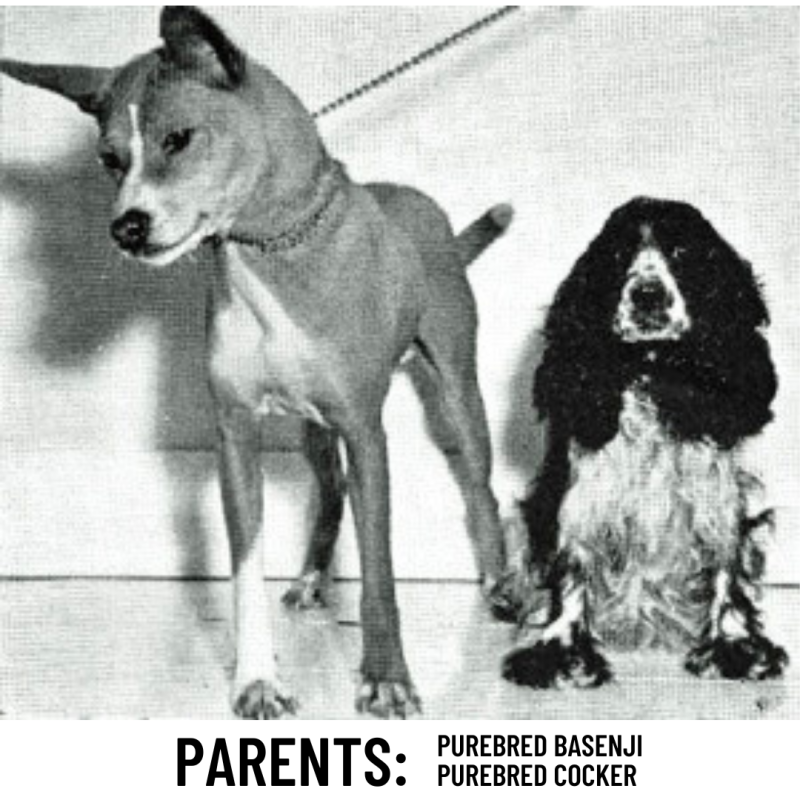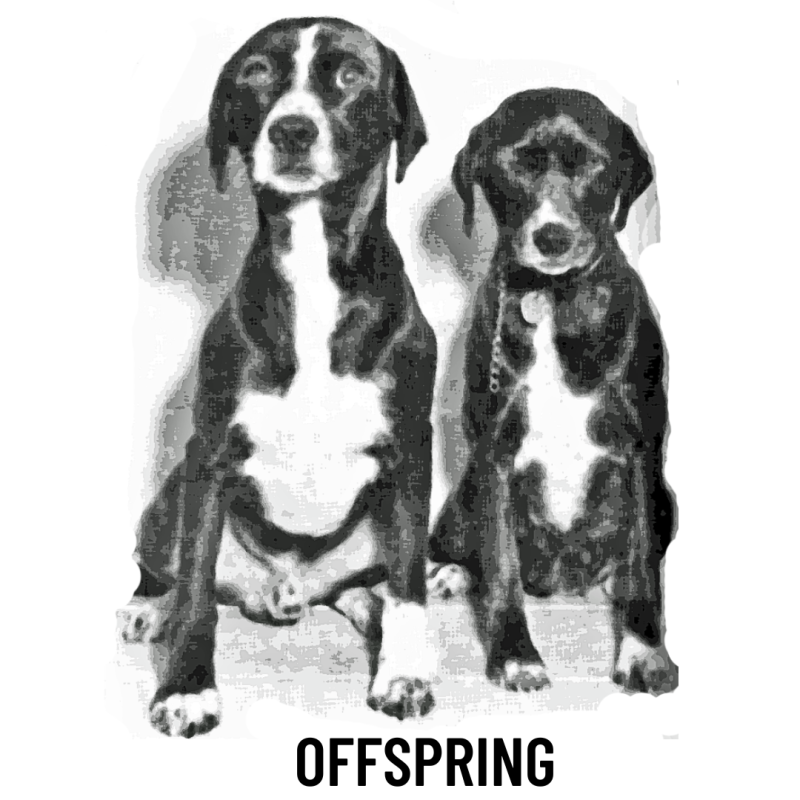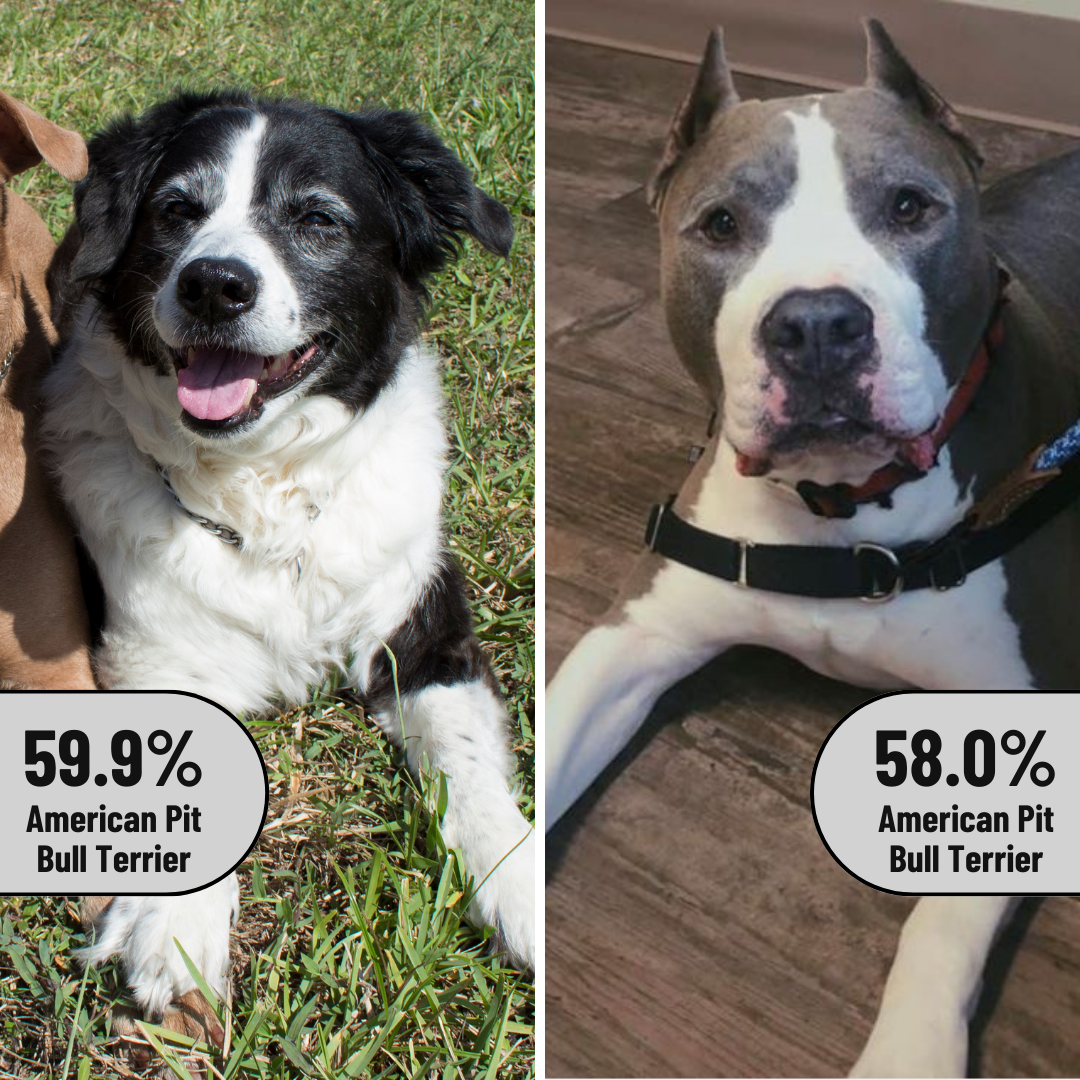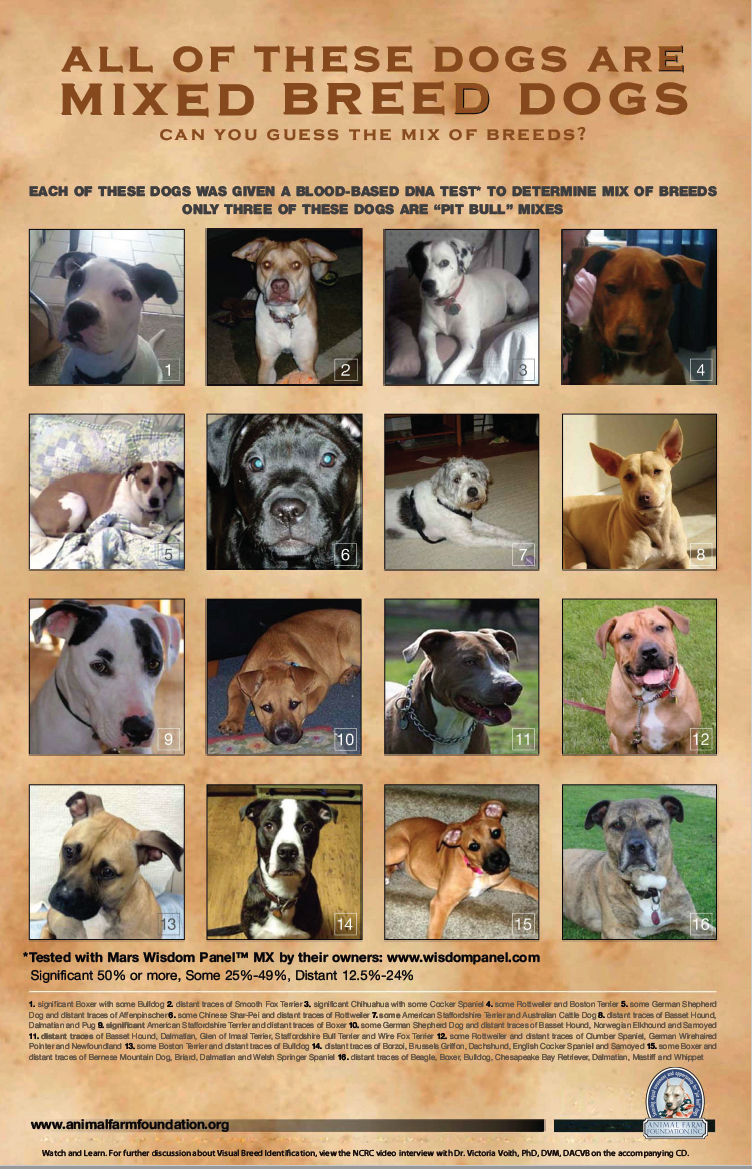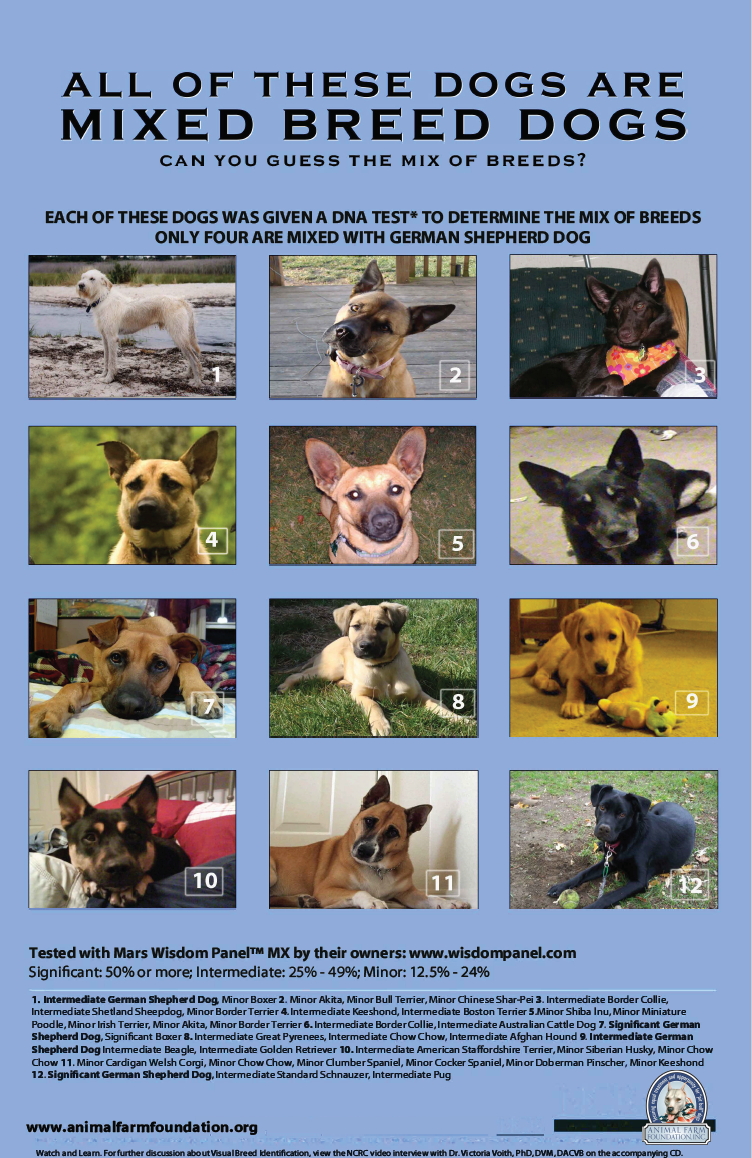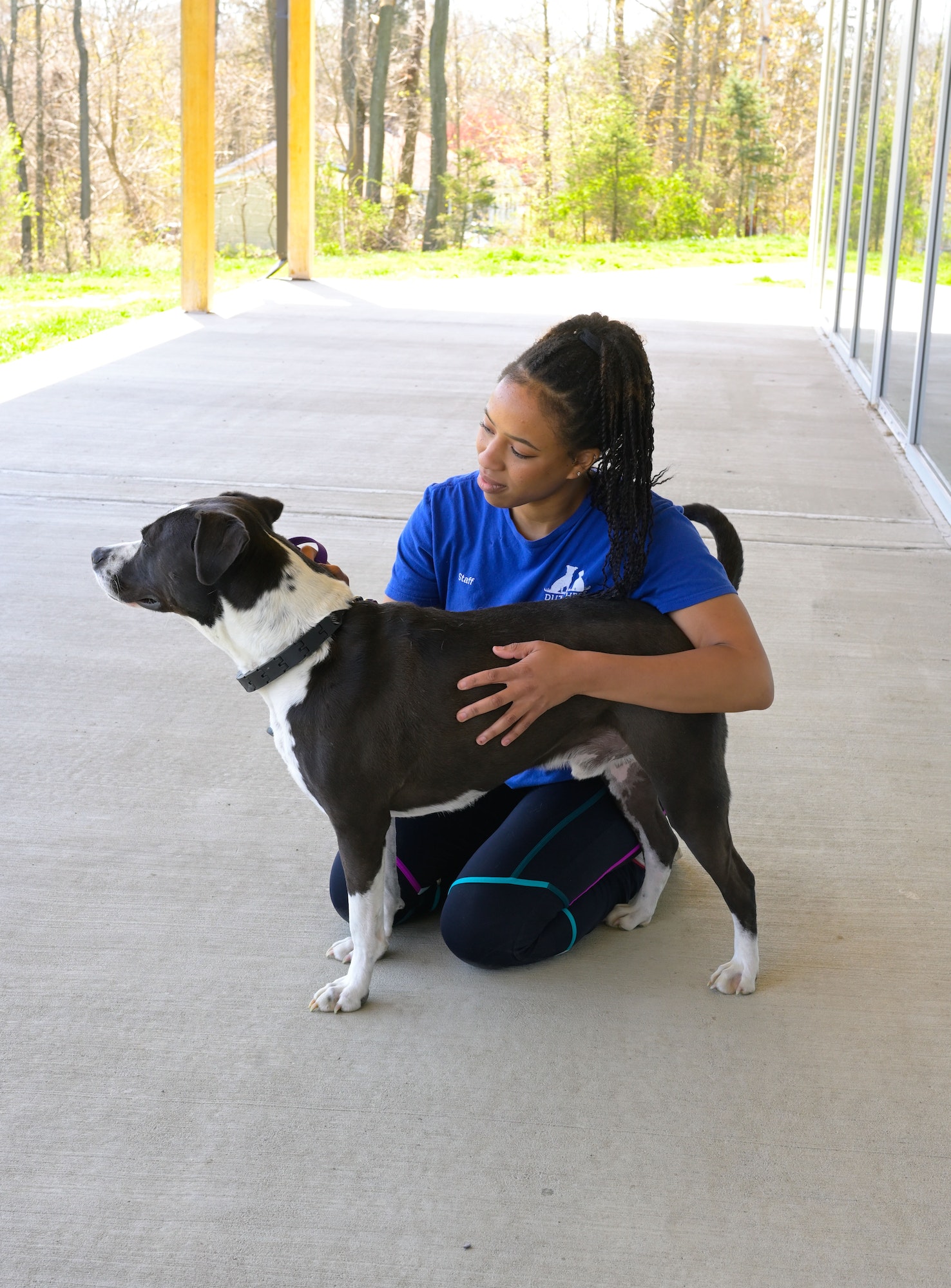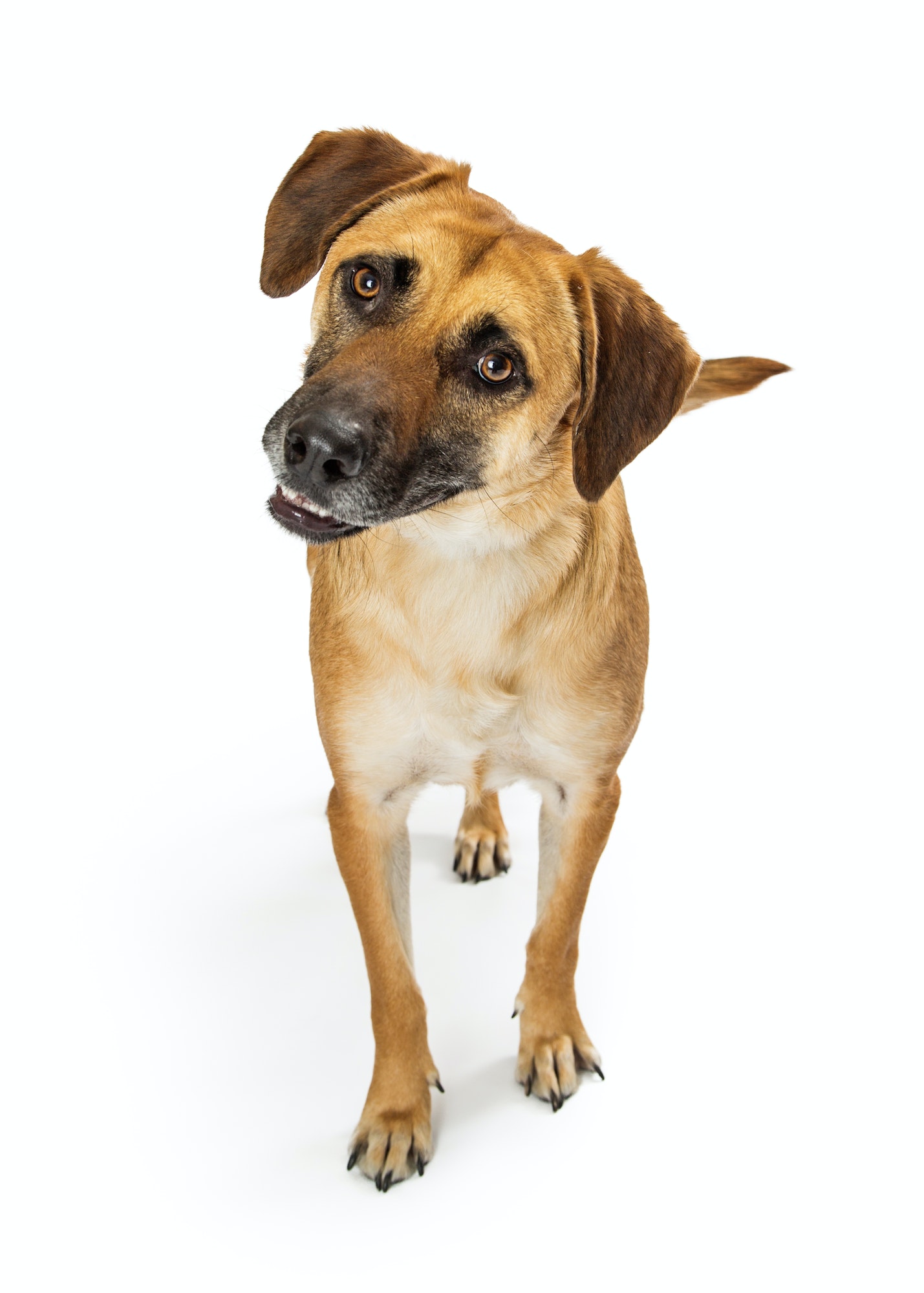The Research
Check out some of the many studies that show the inaccuracy of visual breed identification and its consequences.
- Genetics and the social behavior of the dog (Scott and Fuller, 1965)
- Comparison of adoption agency breed identification and DNA breed identification of dogs (Voith, 2009)
- Comparison of visual and DNA breed identification of dogs and inter-observer reliability (Voith, 2013)
- Is that dog a pit bull? A cross-country comparison of perceptions of shelter workers regarding breed identification (Hoffman, 2014)
- Inconsistent identification of pit bull-type dogs by shelter staff (Olsen, 2015)
- A canine identity crisis: Genetic breed heritage testing of shelter dogs (Gunter, 2018)



